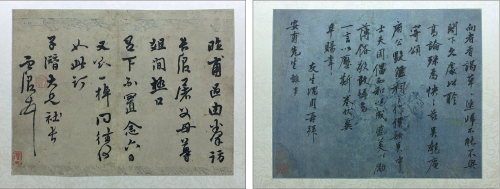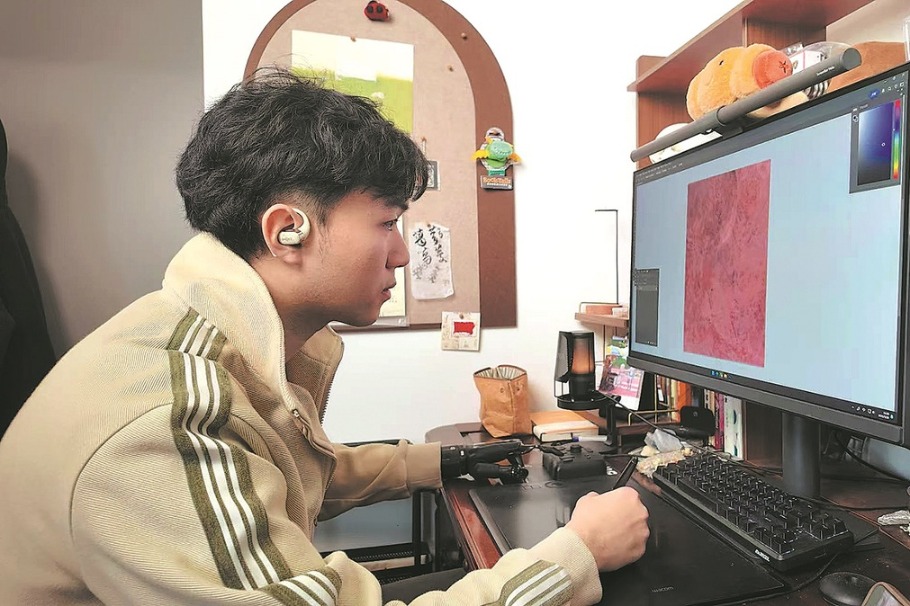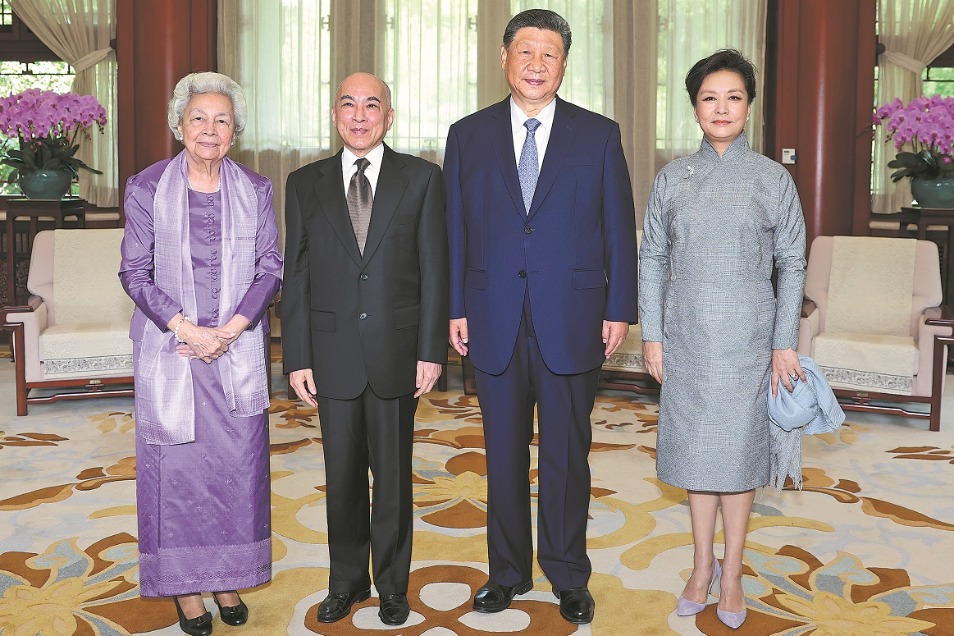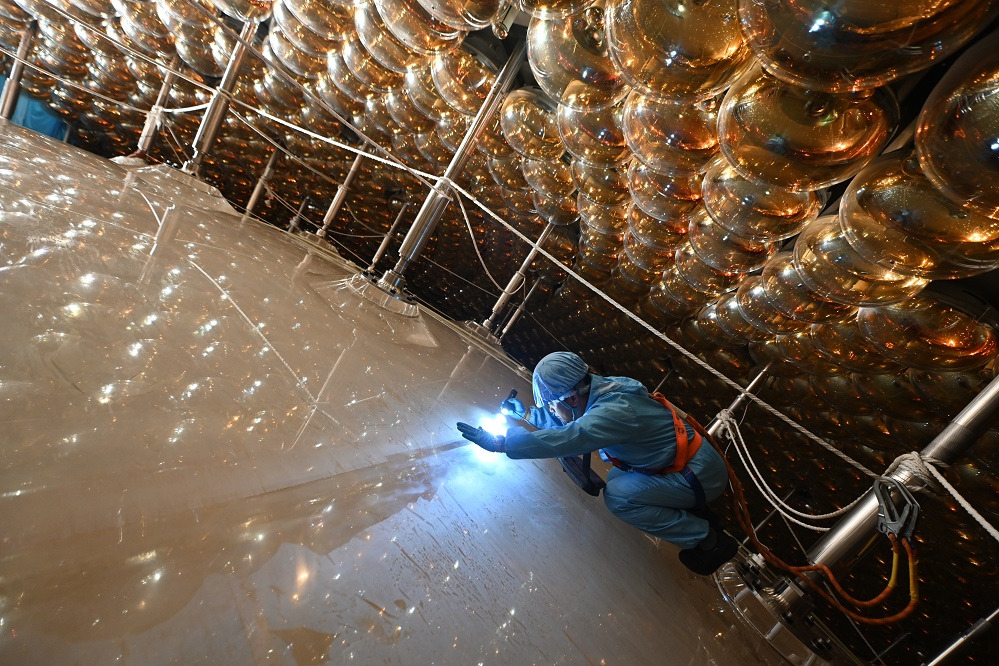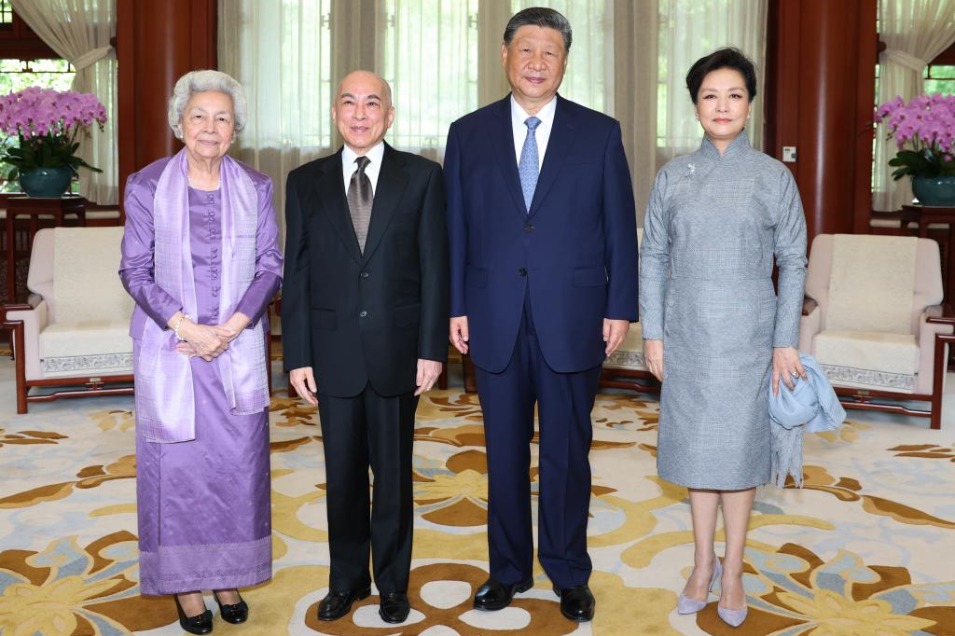THE EXHIBITION THAT CHANGED A LIFE
A chance sighting puts a school teacher on a 28-year journey into ancient artwork restoration, Wang Ru reports.

When people visit an art exhibition, they may expect to be impressed, or perhaps, even moved. Few people, however, would imagine the experience could change their life. Yet, that is what happened to a 23-year-old Fei Yongming in 1993.
However, it wasn't grand works of art that had such a transformative influence on his career, but a rudimentary public notice he spotted hanging on a wall of an exhibition at the Shanghai Research Institute of Culture and History.
What that notice said, as far as Fei recalls, was that a training course for picture mounting would be held at the institute by Yan Guirong, a resident master of mounting pictures and calligraphy works. Fei, a school teacher at the time, had a strong interest in the field and had already learned a lot about it. So, naturally, he signed up.
In the end, the course did not go ahead, but Fei, keen to pick up some new skills, managed to get an introduction to Yan. Impressed by the young man's determination, Yan took him on as a student. Fei threw himself into studying and practicing the craft, and now, more than half a lifetime later, he has become every bit the expert.
What Fei learned from Yan is Yangzhou-style painting mounting and restoration. China has a long tradition of mounting paintings. Under the reign of Emperor Qianlong (1711-99) in the Qing Dynasty (1644-1911), one craftsman, Ye Yufu, opened a store to help people frame paintings and calligraphy in what is now Yangzhou city, Jiangsu province, and became famous. He is thus regarded as the father of the Yangzhou-style painting mounting and restoring technique.
At the time, there were several styles of mounting paintings. The one in Yangzhou was especially renowned for restoring ancient paintings and calligraphy works.
"We are required to fix the old like the old, trying our best to ensure the feel of the ancient work is retained," says Fei, who now lives in Shanghai.
The way paintings are mounted has greatly changed over the centuries, and the techniques used these days usually depend on the era in which the painting was created.
To realize that goal, the artisan must consider many aspects before restoring an old painting, including the time when the work was created, the original creator and the value of the work.
"One's understanding of the painting determines the result of the restoration," Fei says. "You must have good judgement, so you can produce the most suitable result for the work."
In fact, the preparatory work for a framing is more important and more time-consuming than the physical work in completing the assignment, he says.
"Each painting has its own features and poses different challenges for us. I was taught to think things over very carefully, form a plan and then start the work. Once we dip the artwork in water, often the first step in a restoration, we must continue without stopping, or the artwork might be irreversibly harmed."
For example, when he restored a picture of a family tree of Zhu Xi, a Chinese philosopher and Confucian scholar who lived during the Song Dynasty (960-1279), in 2016, he spent more than six months developing the plan, but the work took less than two months.
He talks fondly of one task he completed five years ago, restoring a letter written by Wen Zhengming, a painter and calligrapher of the Ming Dynasty (1368-1644). After patching several hundred holes in the letter, he found a slip of paper with the description of the letter on the back, thought to be a memo written by a Qing Dynasty collector who once owned it.
He carefully removed the slip of paper and mounted it with the letter, so as to "maximize the information".
"There are often marks on some paintings and calligraphy works, such as serial numbers, and we try to keep them when mounting," he says.
To restore ancient paintings, Fei says, he often has to find the proper paper substitute to fix the broken parts. However, ancient paper is a cultural relic that cannot be used in restoring ancient paintings, so that has inspired him to constantly experiment to try and replicate ancient paper. If he is successful, he will use it in his restoration.
"Before the Ming Dynasty, the paper that the literati used was quite different from today," he says. "They used various types of paper that had very different characteristics. Such paper was made with bamboo, hemp and mulberry, and involved very complex techniques."
Many of those techniques have been lost to history, with only a few records buried deep in volumes of historical literature. Fei has searched for them, seeking reliable instructions.
In 2018, when he tried to replicate the paper upon which some Song Dynasty classics were written, he became familiar with the raw materials and dyes after reading several books, but he needed to continue reading to find out how to apply this knowledge.
"Although different ancient books record how to make the paper, if you don't compare them to seek the key procedures in the techniques, you can't replicate the paper to a satisfactory degree."
At a recent exhibition in Shanghai Library, a variety of paper types that Fei has replicated over the past 10 years were exhibited. These included tanjian, a well-known type of ancient paper invented by a man surnamed Tan during the Ming era. The paper is said to have been a favorite of Dong Qichang, a Ming Dynasty painter and calligrapher.
After recreating a type of paper, Fei often invites calligraphers and painters to try it, so they can tell him if the result is successful.
"How calligraphers and painters feel about paper is vital," Fei says.
Cai Yi, a calligrapher who has worked with Fei for years, says Fei often works in an exemplary way and has his own understanding of making paper.
"One cannot work in the field of restoring ancient paintings and calligraphy works without such an attitude," Cai says.
Fei says, "Restoring and mounting ancient paintings is a labor of love. One must have a true love for the ancient work and respect for the techniques that have been passed down from ancient times to be able to do a good job."
Many of the major differences between the various mounting techniques have disappeared, and modern technology has been applied to the field. However, Fei says that while technology is very helpful, he remains cautious in its usage.
"Since we work on irreplaceable artifacts, we must be especially careful, for fear that some experimental methods may damage them."
He has some apprentices now, and hopes they will inherit the craft and develop good techniques of their own. He also works as a consultant for some institutes responsible for restoring ancient paintings. Compared to the time when he learned the techniques from Yan, it seems that, now, students of the subject spend a lot of time learning theory at school, but get little hands-on experience, he says.
He would like to see higher education institutions improve their teaching so that students are equipped with vital skills, and do not just graduate with a diploma in hand, he says.
